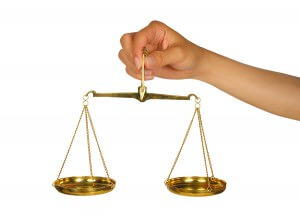 Anyone dealing with digital images learns early on about the trade-offs of resolution — both high and low. While technology continues to advance, there is a constant here: Higher resolution gives more information — a clearer picture — but it also takes more space to store, and it’s slower to transfer electronically.
Anyone dealing with digital images learns early on about the trade-offs of resolution — both high and low. While technology continues to advance, there is a constant here: Higher resolution gives more information — a clearer picture — but it also takes more space to store, and it’s slower to transfer electronically.
Well, curiously enough, there are similar trade-offs when it comes to market research survey design, and, in our case, “resolution” is defined by the number of points we choose for our scaled questions.
More Points Equals Higher Survey Research Resolution
How many points in a scaled question is “enough”? That’s a pretty common question in survey design. If you’ve spent some time with online market research surveys, you’ve probably noticed that they often have five points. “Please rate your satisfaction on a scale from 1 to 5, with one representing ‘not at all satisfied’ and five representing ‘extremely satisfied’.” Sometimes, though, you may see a 7-point scale instead of 5. Is 7 points an improvement? How about 11? Is higher resolution better? The answer is, “that depends”.
Seeking Balance in Survey Scales
Ask this question of two researchers and you’ll likely get two very different opinions, but ideally we want to walk the line between simplicity for our survey takers and accuracy in our data. If we expect to see a lot of variability in the responses, higher resolution will allow our respondents to be more precise, providing better data. As an example, we tend to use larger scales for surveys about customer satisfaction because of the wide variation in customer experiences with a given brand.
Even or Odd Scales?
The choice of either an even or odd point scale really boils down to one issue: Do you want to give your respondents a “neutral” option? Market researchers tend toward odd scales for most projects, so 5 and 7-point scales are common, and even 11-point scales are seen occasionally.
There’s a debate, and it goes like this:
- Even forces a choice. There’s no riding the fence with even scales — your respondent has to come down at least somewhat on one side of your question or the other. My personal take is that neutral can be a valid opinion and I don’t want to force people to say something that’s not true. And in some cases, people are too nice, so they might answer on the positive side — even if they don’t feel that way — unless you give them the option of neutral. It’s something of a quandary, and it requires some judgment on the researcher’s part. Familiarity with the target population in question helps.
- Odd allows an easy-out. Well, maybe. Some researchers believe that people will default to neutral because it’s easier, but there’s a debate about whether that really happens. In my experience, it is not an issue. It used to be a problem years ago when many surveys were done on paper—we would call it “pencil whipping” (respondents would “whip” their pencils down the middle column of a survey grid). But for online surveys in particular, I see no evidence that this is a notable issue.
Plan for Future Surveys
If you intend to be doing these surveys for a while, it’s worth thinking about picking a scale and sticking with it. Even or odd, 4 or 7 points, standardize your system so that you have some consistency across your market research surveys over time. Some day you’re going to want to compare results, and having a standard format will make your life a little easier.
When in Doubt, Go Big
If you still can’t decide on a scale to stick with, err on the side of higher resolution. Just like in photographs, you can always collapse the scale when you’re doing your data analysis, but you can never expand it (increase the resolution) once you’ve captured the data.
Know Your Survey Goals
The choices really aren’t that complex. Larger scales allow a greater degree of potential accuracy, but require a bit more thinking by participants. As a researcher, you need to make these trade-offs carefully, so that your research delivers the best picture possible.









